GAINESVILLE, ALABAMA
 The small town of Gainesville is located on the Tombigbee River in north Sumter County. The land on which the town of Gainesville now stands was originally owned by John Coleman, husband to a Choctaw Indian of the area. In 1831, he sold the land to Colonel Moses Lewis, who had the town divided into lots. The town is named for Colonel George Strother Gaines, who was an American Agent to the Choctaw Indians and had helped negotiate the Treaty of Dancing Rabbit Creek. The first groups of settlers were from Virginia, South Carolina, and North Carolina, and they settled on a street close to the river known as Yankee Street (which still exists today). The town grew very rapidly and by 1840 had become the third largest town in the state of Alabama, with a population of over 4,000. Gainesville was also a major port, shipping 6,000 bales of cotton to Mobile each year by steamboats on the Tombigbee River. In 1855, fire destroyed a large portion of the downtown area. Then the Civil War came, followed by Reconstruction. This along with the end of the riverboat era lead to the decline of Gainesville.
The town’s Confederate Cemetery is the final resting place of 250 Civil War soldiers who were injured in the Battle of Shiloh and brought to the hospital in the Female Academy in Gainesville. In addition to Civil War history, Gainesville offers an abundance of pioneer history and features many historical homes and churches. Provided are details about some of the historic sites that you will find at Gainesville.
The small town of Gainesville is located on the Tombigbee River in north Sumter County. The land on which the town of Gainesville now stands was originally owned by John Coleman, husband to a Choctaw Indian of the area. In 1831, he sold the land to Colonel Moses Lewis, who had the town divided into lots. The town is named for Colonel George Strother Gaines, who was an American Agent to the Choctaw Indians and had helped negotiate the Treaty of Dancing Rabbit Creek. The first groups of settlers were from Virginia, South Carolina, and North Carolina, and they settled on a street close to the river known as Yankee Street (which still exists today). The town grew very rapidly and by 1840 had become the third largest town in the state of Alabama, with a population of over 4,000. Gainesville was also a major port, shipping 6,000 bales of cotton to Mobile each year by steamboats on the Tombigbee River. In 1855, fire destroyed a large portion of the downtown area. Then the Civil War came, followed by Reconstruction. This along with the end of the riverboat era lead to the decline of Gainesville.
The town’s Confederate Cemetery is the final resting place of 250 Civil War soldiers who were injured in the Battle of Shiloh and brought to the hospital in the Female Academy in Gainesville. In addition to Civil War history, Gainesville offers an abundance of pioneer history and features many historical homes and churches. Provided are details about some of the historic sites that you will find at Gainesville.
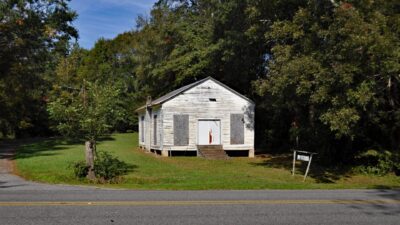
The Clark Chapel United Methodist Church was founded by freed slaves in 1867, only two years after the end of the Civil War. This is one of the oldest …

The town of Gainesville was laid out in 1832 by Moses Lewis. By 1840 Gainesville had become the third largest town in the state of Alabama, with a pop …

This house is one of the least altered of Gainesville’s early buildings. The building’s vernacular Greek Revival character suggests a construction dat …

During the 1860 – 1880 period, Edward N. Kring (1836-1910) emerged as the leading carpenter and builder of Gainesville. He built several businesses an …

This is Gainesville’s oldest church. The congregation was organized in April of 1837 through the joint efforts of a small group of Southern-born Presb …

At the site of this monument, Gen. Nathan Bedford Forrest and his troops were paroled by Gen. Canby thus being the last troops east of the Mississippi …

This is a Greek Revival style house with Victorian additions. It was probably built in the 1840-1850 time period. The original owner of the house is …

This Vernacular “I” style home, built about 1865, was the home of Edward N. Kring who was Gainesville’s leading late 19th-century builder. He built b …
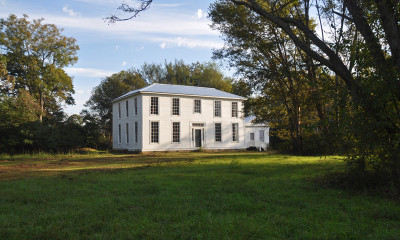
This was the home of Moses Lewis, founder of Gainesville. Lewis was responsible for laying out the town in 1832. This house was built circa 1835 and i …

In 1831, Colonel Moses Lewis purchased the land where Gainesville is currently located and he had the land divided into lots for a town. The new town …
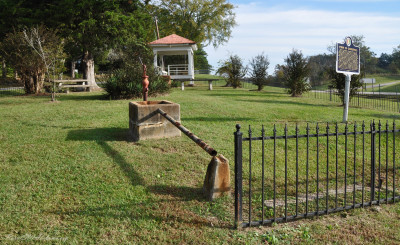
Most towns have a town square. Gainesville is unique in that it has a town triangle. (However, a picture shows the original to have been larger and mo …
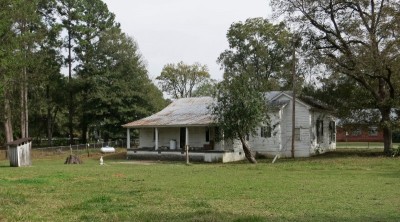
This small house was built for Richard Haskins Roberts ca. 1851. It has a center-hall with a single large room on either side and shed rooms behind. T …

This house is thought to have been built during the 1835-1840 time period for Walter W. Russell (1806 – 1878), who was from New Hampshire. He was one …
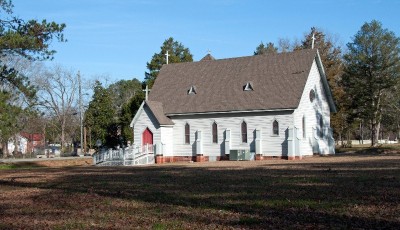
This Gothic style church was built in 1879 by Gainesvilles’ leading late 19th-century builder, Edward N. Kring. In accordance with tradition, the buil …

This and the Moses Lewis house may the oldest surviving two-story dwellings in Gainesville. The restrained Federal style appearance of the house sugge …

This was the showroom for coffins of builder, Edward Kring. Here you would pick out your material and wood for your coffin which would then be custom …
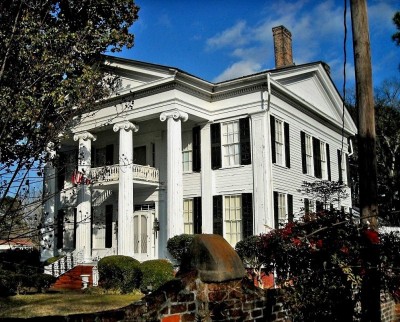
This beautiful antebellum home was built circa 1845 for Col. Green G. Mobley from Fairfield District, SC and his Vermont-born second wife, Henrietta. …

This historical marker is located in the Gainesville Park that’s on the north side of Gainesville near the river bridge (GPS coordinates 32.822814, -8 …

This home closely resembles Aduston Hall which is also at Gainesville. Both houses were built as summer homes for the Travis brothers of Mobile. This …
